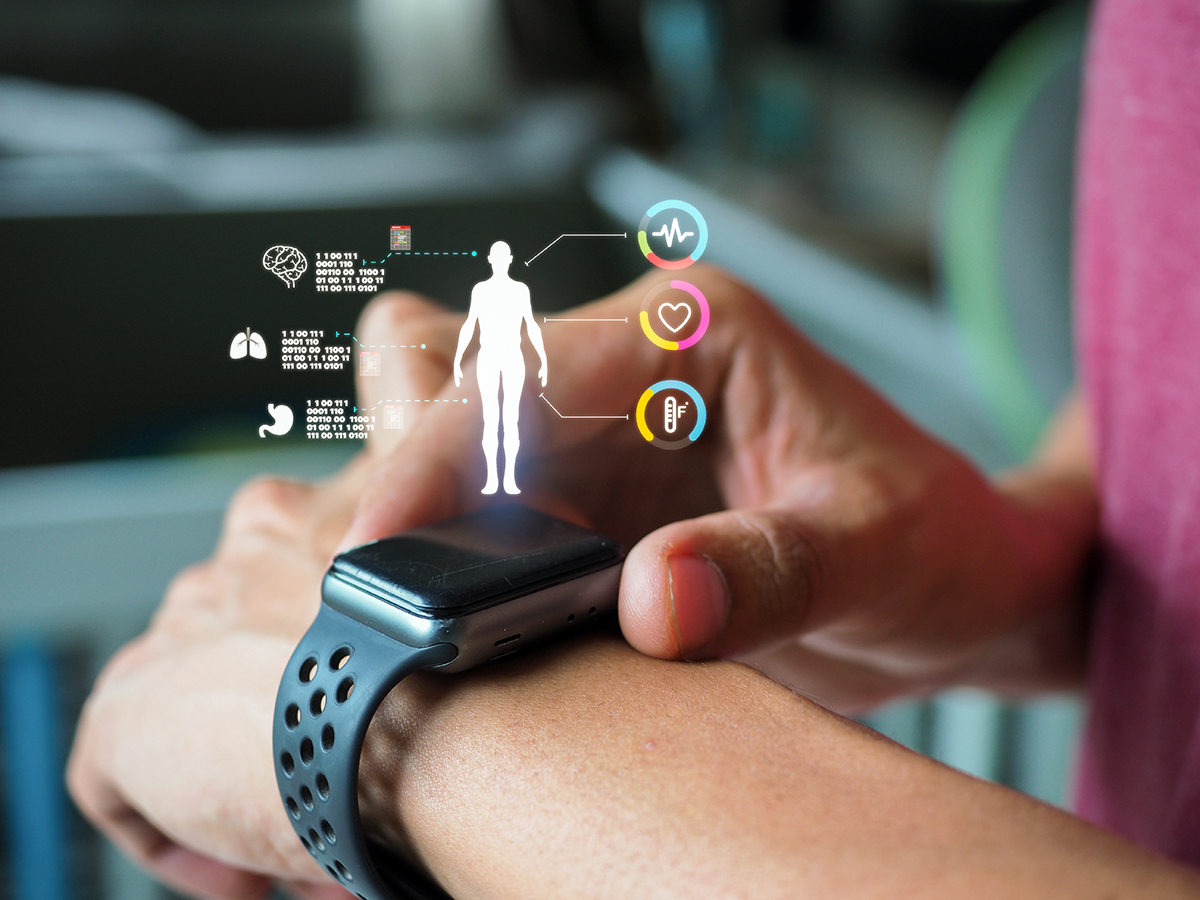
GPT-4 Meets EHR: Payer and Provider Use Cases

As healthcare continues to evolve, technology has played an increasingly important role in improving the quality of care provided to patients. Electronic health records (EHR) have become the backbone of the healthcare industry, allowing for the collection, storage, and sharing of patient data. However, with the vast amount of data generated by EHRs, it can be challenging for healthcare providers and payers to make sense of it all. This is where GPT-4, the latest generation of natural language processing (NLP) AI, comes in.
Also read: How Large Language Modules and ChatGPT Will Drive Industry Transformation
GPT-4 has the potential to revolutionize the way we use EHR data by analyzing, interpreting, and transforming it into meaningful insights that can be used to improve patient care, streamline workflows, and identify fraud and abuse. In this blog post, we will explore the various use cases where GPT-4 can help healthcare providers and payers to unlock the full potential of EHR data.
PROVIDER CENTRIC USE CASES
Current documentation methods in EHRs requires manual entry, which can be time consuming and prone to errors. It’s always a challenge for a provider to accurately document patient encounters while also focusing on their core work: diagnose and treat their patients. GPT-4 can help providers to do faster and more accurate documentation.
USE CASE 1: FASTER AND MORE ACCURATE DOCUMENTATION
GPT-4 can help providers to dictate their notes and observations in real-time, while system can transcribe them into the structured EHR data.
How it works:
GPT-4 uses transformer architecture with multi-layers of self-attention mechanism to capture the relationship between the words in sentences or a document. With a voice-to-text conversion tool, provider’s dictation data passes through GPT-4. It can further process the text data with its ability to understand the context and transform them into a structured EHR data using smart algorithms and clinical standards. The results are an accurate, structured, and compliant documentation that meets regulatory requirements.
Key Challenges:
- Ensuring accuracy is a greatest challenge for the clinical documentation. GPT-4 model needs to have been trained for medical terminology, abbreviations, unique phrasing, etc. so it doesn’t lead to any transcription errors
- The voice-to-text conversion tool should be able to recognize the different accents and speech patterns to ensure accurate transcription
Patient’s data from various sources like EHR, imaging system, labs results, etc. rarely provides a comprehensive picture about patient’s health. Hence, providers must go through large amount of data from various sources to derive diagnosis or make certain clinical decisions. GPT-4 can help providers in making informed decision.
USE CASE 2: ENHANCED CLINICAL DECISION MAKING
GPT-4 can analyze EHR data and connect the dots to provide personalized recommendations for patient’s treatment or diagnosis.
How it works:
GPT-4 can integrate various types of patient data such as medical history, test results, imaging data, and medication information from various sources including EHR systems and analyze it using NLP and ML techniques to identify patterns and correlations. GPT-4 can generate personalized recommendations for providers by considering correlations, clinical guidelines, and information from medical literature.
Key Challenges:
- Integration and standardization of patient data from different sources as EHR data can be fragmented and inconsistent, making it difficult to integrate and analyze
- If the GPT-4 model is trained on biased data or incomplete data, it may lead to inaccurate or unfair recommendations for the clinical decisions
Providers often have limited time and resources to devote to patient engagement, which can make it difficult to effectively communicate with and educate patients. Engaging patients requires a personalized approach that considers their unique needs, preferences, and circumstances. However, providers may find it challenging to develop tailored strategies for each individual patient. GPT-4 can help to engage patients.
USE CASE 3: IMPROVED PATIENT ENGAGEMENT
GPT-4 could be used to engage patients in their own care by generating personalized health goals and recommendations based on their EHR data. For example, the model could recommend specific lifestyle changes or medication adherence strategies based on a patient’s medical history and current condition.
How it works:
GPT-4 would use NLP and ML algorithms to analyze the patient’s EHR data and generate the personalized messages. The model would draw on a vast corpus of medical literature and clinical guidelines to ensure that the recommendations are evidence-based and align with best practices around specific chronic conditions of the patient. Additionally, GPT-4 could consider the patient’s demographic information, medical history, and other factors to generate a truly personalized message.
Key Challenges:
- Integration with existing workflow could be challenging. This may require significant changes to existing processes and systems, which can be challenging to implement
- Additionally, providers must ensure that the recommendations generated by GPT-4 can be easily incorporated into patient care plans and that patients are notified of any recommended changes to their care
PAYER CENTRIC USE CASES
The current scenario for claims analysis in healthcare involves a lot of manual effort and a lack of standardization across the industry. Payers face several challenges, including difficulty in identifying fraudulent claims, delays in processing claims, and errors in claims processing. GPT-4 has the potential to revolutionize claims analysis by automating the process.
USE CASE 1: CLAIMS ANALYSIS
GPT-4 can analyze claims data from EHR systems to identify patterns of fraud, waste, and abuse. For example, GPT-4 can analyze and identify unusually high number of claims submitted for a particular diagnosis code or procedure code. It can further analyze the relationship between providers and patients, and identify potential conflicts of interest, such as a provider who refers all their patients to a specific lab or imaging center.
How it works:
GPT-4 can analyze medical codes using NLP techniques, including named entity recognition (NER), part-of-speech tagging (POS), and semantic parsing to understand the claims information. GPT-4 can be trained on a large corpus of medical codes (e.g. ICD) and their associated descriptions to learn how to identify patterns in the data. It can help flag potential fraud in medical claims by analyzing medical codes and identifying patterns that indicate fraudulent behavior. For example, if a provider consistently bills for expensive treatments or procedures that are not typically necessary for a patient’s condition, GPT-4 can identify this pattern and flag it for further investigation.
Key Challenges:
- Medical coding system is complex and it’s difficult to accurately interpret all the nuances of the system
- Fraudulent actors may try to evade detection by deliberately using coding patterns that are difficult for GPT-4 to identify
Risk stratification is a critical process in healthcare that involves identifying patients who are at high risk of developing certain health conditions or complications. Payers face several challenges in this area, including difficulty in identifying high-risk patients, gaps in data, and inconsistencies in risk assessment methods. GPT-4 can help to address these challenges.
USE CASE 2: RISK STRATIFICATION
GPT-4 can be used to identify patients who are at high risk of developing costly medical conditions, such as diabetes or heart disease. This is done by analyzing a patient’s EHR data, such as their medical history, lab results, and demographic information.
How it works:
By using advanced machine learning (ML) techniques such as deep neural networks and natural language processing in GPT-4 that can accurately identify relevant data points from structured and unstructured data sources. GPT-4 can then use this information to generate predictive models that help payers and providers identify patients who may need additional interventions or care management to prevent adverse outcomes.
Key Challenges:
- Interpretability – ML algorithms used by GPT-4 can be difficult to interpret, making it challenging to understand how the model arrived at its predictions
- Fragmented data stored in different systems or formats that are not easily accessible or interoperable
Prior authorization is a process used by payers to determine whether a particular treatment or service is medically necessary and should be covered by insurance. Payers face a few challenges in this area, including delays in processing prior authorization requests, a lack of transparency in the decision-making process, and errors in the approval process. GPT-4 has the potential to improve the prior authorization process.
USE CASE 3: PRIOR AUTHORIZATION
GPT-4 can potentially help streamline the prior authorization process by analyzing the patient’s EHR data to determine if prior authorization is necessary for a particular treatment or procedure. GPT-4 could identify the specific procedure or medication being requested and then cross-reference this with the patient’s medical history and insurance coverage.
How it works:
Payer would need to extract relevant data from the patient’s EHR, such as their medical history, current medications, and any prior treatment plans. This data would then be fed into the GPT-4 model. GPT-4 would rely on advanced NLP techniques such as NER to identify key pieces of information such as medications and medical conditions. Once the model has analyzed the patient’s data, it would generate a recommendation using a combination of rule-based logic and ML techniques. The rule-based logic would be based on existing medical guidelines and best practices, while the ML algorithms would use past data to identify patterns and make predictions.
Key Challenges:
- Strong need for accurate and up-to-date information in the patient’s EHR. Incomplete or outdated information could lead to errors in the prior authorization process, potentially delaying care or resulting in a denial of coverage
- Ability to accurately interpret and understand the nuances of medical terminology and insurance policies. This could require significant training and testing to ensure that the system can make accurate determinations and generate appropriate documentation
A Smarter Future for Healthcare with GPT-4
GPT-4 has the potential to revolutionize the healthcare industry by utilizing EHR data for various use cases. While there are certainly challenges to overcome in implementing these solutions, the benefits could be significant for both providers and payers. With the ability to analyze and understand large volumes of unstructured data, GPT-4 can provide valuable insights that can improve patient outcomes and reduce costs for both providers and payers. As the technology continues to evolve, we can expect to see even more innovative use cases emerge in the future.




